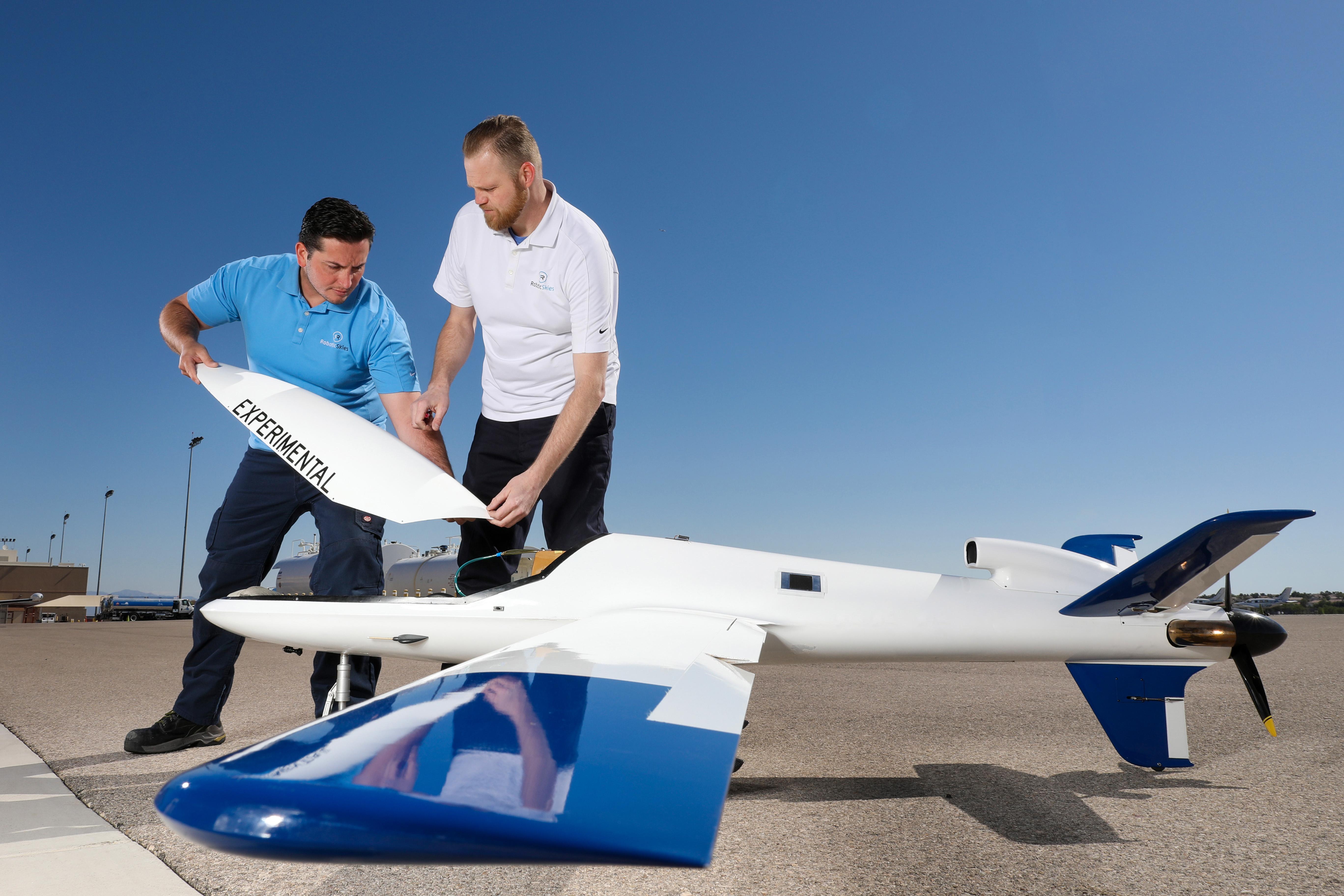
As electrical vertical takeoff and landing (eVTOL) aircraft and drones gain more traction within aviation, MROs are starting to prepare for what maintenance will look like in the advanced air mobility landscape. Brad Hayden, founder and CEO of Robotic Skies, talks to Lindsay Bjerregaard about how it is building a network of unmanned aircraft systems (UAS) maintenance providers.

Robotic Skies is building a network of UAS maintenance providers. What is the vision behind this network, and how will the ecosystem ideally operate?
I started Robotic Skies in 2014 with three fundamental beliefs based on my decades of experience in traditional aviation maintenance:
First, drones had the potential to be the most significant disruptor to aerospace since the advent of the jet engine. Second, to integrate drones into the airspace, aviation authorities would regulate them just like manned aviation aircraft, and ultimately that would include the need for certified aviation-grade maintenance. And third, to realize the true potential of drone technology, these aircraft would continue to get bigger and more complex and, therefore, more costly to transport back to production facilities for repair. A local maintenance support solution could solve these pain points.
From these assumptions, I developed the Robotic Skies concept and, although it has taken some time, we have seen our predictions about the market play out in our favor. Now six years later, we see a vibrant commercial drone industry emerging with operators who are ready to expand their fleets and invest in high-end, mission-specific platforms. And because of the higher investment level, operators of these professional systems want to maintain and repair them versus replace them.
We are also seeing regulators set a precedent by treating commercial drones as aircraft operating in shared airspace. For example, in the U.S., the FAA currently requires that drone delivery operators follow the Part 135 certification path. These activities are all very positive signals for our MRO network, which already has the experience and expertise to provide services that can meet any technical or regulatory requirement.
How big is Robotic Skies’ network now, and where would it ideally like to be within the next few years?
The Robotic Skies Service Center network comprises more than 200 independently owned and operated locations across more than 40 countries. The investment from Boeing HorizonX Ventures in 2019 allowed us to accelerate our network recruiting efforts, especially in regions outside the U.S. We also have relationships with more than two dozen UAS manufacturers to develop and manage their maintenance programs.
The global forecast volume of new commercial UAS entering operation over the next few years remains high—by some forecast models, in the millions. The prospect of this fleet size requires new business models like ours to efficiently scale up and distribute maintenance services. Robotic Skies is a single point of access for operators and OEMs to plug into a global support system.
We will continue to expand the network to ensure we can meet the forecast demand. As UAS technology becomes more and more mainstream, we can quickly scale our capacity by bringing in new facilities to the network and training personnel.
On a related note with Boeing, we have partnered with Upskill, a fellow Boeing HorizonX Ventures portfolio company, to incorporate remote video technology into our solution. Since the pandemic, we have accelerated exploration and development around remote training and support.
Earlier this summer, Robotic Skies partnered with Skyports, which is involved in the creation and operation of vertiports in the advanced air mobility market. What do you think the vertiport model will look like, and how will maintenance be integrated at these locations?
We are thrilled to partner with an organization like Skyports. Advanced air mobility and passenger eVTOLs are an exciting aspect of the industry. Vertiports open the door to supporting more than just the UAS—it’s also the landing and docking infrastructure and personnel so integral to enabling urban transport capabilities.
We imagine the vertiport infrastructure as a hybrid of existing airport locations, heliports and pads, car parking structures, and new construction to integrate and accommodate this new transport mode. Maintenance support for these facilities would be an extension of the Robotic Skies network and create new opportunities for next-generation MRO.
Maintenance providers for traditional aircraft and components will need to transition their capabilities and workforce skillsets to prepare for servicing UAS, such as drones and eVTOLs. How difficult will this process be, and what steps should MROs be taking now to get ready for the advanced air mobility revolution?
The good news is that MROs already have many of the core skills and experience to work on these new systems. We recruit repair stations into our network for various skills, ratings and specialty services. We feel that experience with avionics installation, troubleshooting and repair are highly transferrable to drones. Our vision is to make it as easy as possible for MROs to incorporate these new opportunities into their existing business.
Regulatory guidance still needs to be established for the maintenance processes on UAS. How is Robotic Skies involved in this task, and when does it need to be achieved—considering how soon some OEMs are targeting entry into service for their vehicles?
I agree the commercial UAS industry is quickly maturing to the point that we must address the ecosystem infrastructure and support requirements to ensure safe operations. It is essential to the safety of the National Airspace System for unmanned aircraft to be maintained in a similar manner to manned aircraft. Through our industry involvement, Robotic Skies is working to make that a reality.
Since 2014, I have actively participated in the ASTM Committee F38 on Unmanned Aircraft Systems. My work with this committee includes leading standards development teams related to UAS Continued Airworthiness and Technician Training Qualifications. I chair the ASTM subcommittee F46.06 on Autonomous and Electric Aircraft Maintenance Personnel and the NBAA Emerging Technology Committee, and I’m a member of the GAMA Electric Propulsion and Innovation Committee. So, lots of committee work! But these efforts are vital to the global harmonization of standards and airspace safety.
It has taken time for regulatory guidance to take shape, but now we are seeing the FAA hold its position on type certification of these aircraft. In recent news, we are also hearing there may soon be a final ruling on remote ID and operations over people. These two rulings are crucial to enabling beyond visual line of sight and autonomous operations. The sooner this guidance is established, the sooner the industry can move forward and safely realize its full potential.

